
This web page is intended for business people who want to create a new service by THEMSELVES, and gain profit on top of that due to the innovative nature of the product and lack of competition.
What is described below will not be interesting for moneylenders who want to invest a small amount of money and wait until they earn great interest rates, or for security companies that are already doing well, earning enough money from their customers, and have the ability to hire new personnel to service them. This section is for innovators in the field of Robotics as a Service (RaaS) business.
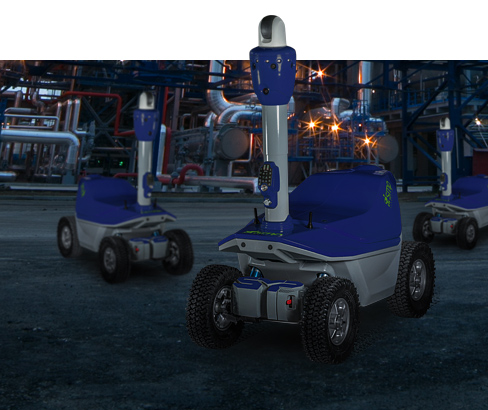
Autonomous security robots
is the foundation of Managed Security Robotics Services (MSRS)
Using robots provides the opportunity to increase the level of security on the premises, and decrease the number of security officers on patrol. 2-3 security officers can guard a facility of virtually any size, if there are enough security robots. Operator’s attention will be required when an intruder is detected, but robots can handle routine premise patrolling on their own.
Companies that provide robotic security services will shape the landscape of the future market for security services in the near future
Just like the appearance of solid state video cameras twenty years ago caused a revolution on the security market, mobile security robots will turn this market on its head over the next few years. Routine patrols around the premises that cost $20 per hour will be a thing of the past, as will having an endless number of cameras with kilometers of cabling connecting them. Teams of security robots will distribute themselves around the premises on their own, identifying the most obvious areas of risk, synchronizing how their positions change and making concealed intrusion onto the guarded premises impossible It is also of no small importance that autonomous robots allow avoiding conflicts if there are any unintentional attempts made to infiltrate the premises; by using a voice alert system, they can make a person aware that entering the premises is forbidden.
To deliver highly cost-efficient robotic services, it is advised to set up a fleet of several dozen robots, instead of just a few
A security robot is a complex device, and its maintenance requires special expertise and qualified personnel. In addition, specialists that are capable of doing this work need to have a sufficiently high level of basic technical qualifications. This means, their salaries cannot be low. At the same time, the robots do not need a specialist to be continuously present, and servicing is done at regular intervals, with installation at the facility performed a single time. That is why creating a team of specialists to support the performance of 5-10 robots is not efficient. It is much more efficient to provide a full-time workload for people by having them service the maximum number of robots possible.
An important circumstance that determines how efficiently these specialists perform their work is the fact that they have to make trips out to the field, where the robots are operated. This makes it desirable for the guarded facilities to be located closely together.

A Good Profit Margin
for a New Business
The price of the robots, when combined with using them as a fleet, allows earning good profit. This makes Managed Security Robotics Services, MSRS, extremely attractive as a new type of business with enormous growth potential. The existing market for security services that works according to the old principles, which include using a large number of security officers, enables a quick growth. Replacing a person on patrol with a robot is something that is unavoidable, and there will be no alternative to it.
A robot fleet decrease expenses to their operate
The new product – a security robot, along with robotized security services that use it – allows a fleet of robots to come into recently created premises, thanks to decreased expenses to operate them. This is especially topical for large-scale facilities being created by government agencies or by the titans of business.
Fleets of robots compete easily with traditional security companies that use security officers on patrol
And the larger the guarded facility is, the more efficient it is to use robots on its premises. Consequently, competitive advantages of using robots become even more real: a high level of security, reliability, continuous maintenance for them, and a competitive price.
One competent manager able to service several objects
In modern-day conditions, when an uncontrolled inflow of immigrants and refugees creates additional security risks for both private property and public infrastructure facilities, the growth in demand for security services is obvious. It will be difficult to satisfy the growing demand by using manual labor. Training personnel and continuously keeping track of them – all of that fades into the past when robotic security is used. The necessary number of robots is delivered to the extent that the need for them arises; they are suitable for immediate use in addressing the challenges associated with ensuring security. Controlling the work done by teams of security robots is easy, and is accomplished remotely, with one competent manager able to service several objects.
Robotic security will add to the attractiveness of newly created facilities for investment due to their increased security and lowered costs associated with security personnel
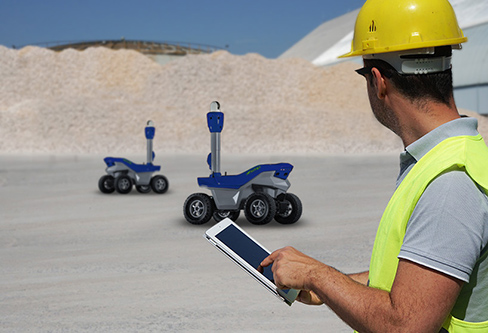
Tasks that need
to be accomplished when organizing a fleet of robots
As is also true for most businesses, when a robot fleet is created there are three fundamental, important goals: creating a team, finding the customer, and attracting investment.
01/ Creating team
02/ Finding the customers
03/ Attracting investment
At the initial stage, three or four employees are needed: a sales representative to look for clients, a technician to install and service the robots, and a manager.
01/ A sales representative
02/ A technician to install
03/ A technician to service
04/ Manager
Areas of application
Perimeter security



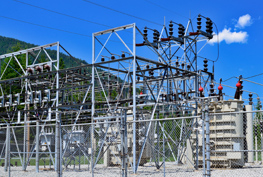
Night patrol

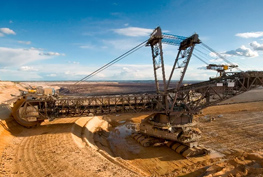


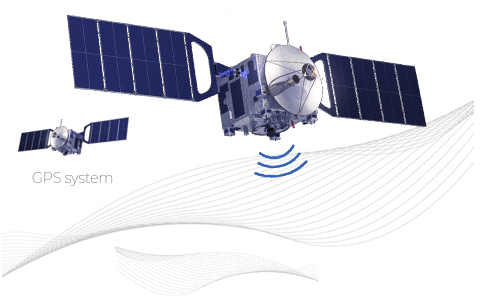
The best facilities for robotic security
When choosing a facility where the robots will operate, it is preferable to start with those that are unmanned and can potentially use a large number of robots. A significant number of robots at one facility sharply increases the commercial viability of using them. The lack of third parties at a guarded facility will eliminate unexpected situations from arising, and decrease the number of trips to the field made by technicians to resolve them. Open-air patrol routes where the horizon can be observed are the most attractive; this makes it easier for the robot’s navigation system to do work by receiving a stable flow of data from the GPS system.
Financial investments in robotic security services
The robots’ competitive price ensures a quick return on investment. From the time the robot fleet starts to operate, it starts to receive a substantial flow of money that can be channeled into reinvestment by buying new robots.
It is worthwhile to steadily grow the number of robots in a fleet, since implementing them at a guarded facility takes time. New facilities, and the numbers of robots on them, should be commissioned in a gradually increasing manner, as the patrol routes are worked out. This permits decreasing the financial risks during the initial stage, and starting a business with a limited amount of financing.
The lengthy operational lifetime guarantees that profit will be earned by using the robots over the course of several years. Distributors can take advantage of leasing programs after they buy several robots on their own.
Business plan for a security company’s fleet of robots
- Acquire three robots to demonstrate how they work in experimental operating conditions.
- Accept sales and equipment for work.
- Conduct training for personnel.
- Take part in security industry exhibitions Security robots unfailingly attract the attention of visitors, and provide the ability to establish contact with advantageous clients that would be virtually impossible to get to otherwise.
- The goal for a sales representative is to find potential clients, and – along with the technician – go on trips to the field to show how the robots work at the customer’s facility.
- Evaluate a facility for how suitable it is to be patrolled by robots; not all facilities are suitable for robots to patrol, and it is the job of specialists to choose the most suitable ones.
- Sign a service contract for robotic security services.
- Install one robot, select the best patrol route. Along with that, the auxiliary equipment needed for the robot to work in a stable fashion can be installed on-site, or it can be stored in a specially equipped minivan.
- Conduct experimental operations, ensure that the patrol routes selected are reliable and provide optimal positioning for observation, and think of how the security officers and team of robots will work together.
- Have the consumer approve the results of the experimental operations, and determine the number of robots needed for the reliable patrolling operations. Evaluate the expenses to integrate the video surveillance systems into the existing stationary security system, if necessary.
- Acquire the necessary number of robots from a distributor.
- Sign a contract with a distributor for virtual, round-the-clock work monitoring the robots on a 24/7 basis.
- Commission the necessary number of robots at the guarded facility.
During operations, it is necessary to:
- Quickly response to a call from a global monitoring service’s operator or the client by dispatching a technician for an on-site visit.
- Service the robots on-site no less than once every five-seven days.
- Take away the robots and service them in conditions present in a service center once every six months.
Support on the part of the security robot distributor:
- Virtual operations support, 24/7
- Guaranteed delivery made from two plants
- Training programs for personnel
- An operational lifetime of no fewer than 3 years
- Free-of-charge software updates
- Spare parts for the robot delivered throughout its service life
- Leasing program provided by the distributor
The program starts in 2019

